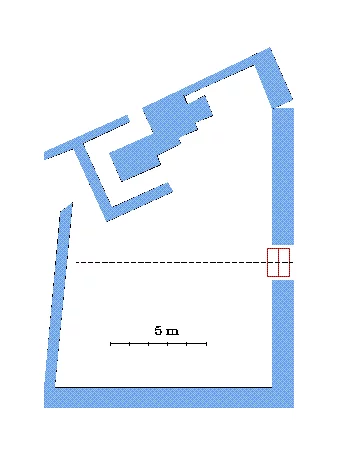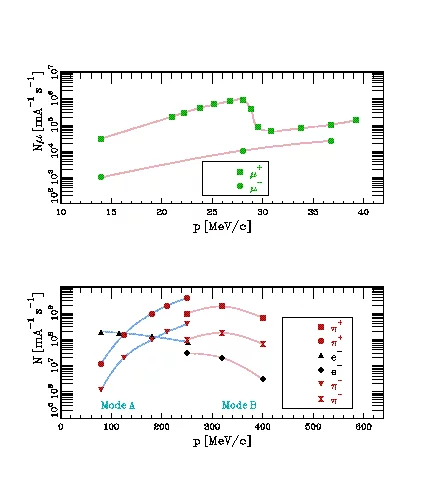The piE1 beam line supplies high intensity pion and muon beams with momenta ranging from 10 to 500 MeV/c. The particles from the thick TE target station are extracted in the forward direction at an angle of 10° . In order to obtain a large angular acceptance, half quadrupoles with pole tip radii of 20 cm are used as the first focusing elements of the beam line. There is no vacuum window in the system, so that extraction of surface or subsurface muons is possible.
Two optical modes of operations are available :
- Mode A provides hight flux with low momentum resolution. Its momentum is limited by the focussing strength of the first quadrupoles to values lower than 280 MeV/c
- Mode B is a low acceptance, high momentum resolution version up to momenta of 500 MeV/c
The Characteristics of the beam line are summarized in the table. The layout of the experimental hall is shown in Fig 1 and the magnetic elements in Fig 2
| Mode | A | B |
|---|---|---|
| Length [m] | 16 | 16 |
| Max. momentum [MeV/c] | 280 | 500 |
| Solide angle [msr] | 32 | 13 |
| Momentum acceptance (FWHM) | 7.8 % | 8.0 % |
| Momentum resolution (FWHM) | 0.8 % | 0.26 % |
| Pi(+) stop density [g¯¹ mA¯¹ s¯¹] | 2.5 10^7 | 1.0 10^7 |
The muon rates around 28 MeV/c are shown in Fig 3 and the measured pion and electron fluxes in Fig 4 Althrough the fluxes have not been measured, mode B provides pions down to a momentum of 100 MeV/c with rate smaller by a factor of 3 compared to mode A. Beam profiles of pions are shown in Fig 5 . Without an electrostatic separator, the positron contamination amounts to e/µ ~50. The use of a short crossed-field separator(Leff=0.7m , E=150 kV/13 cm, transmition ~80%) and a subsequent quadrupole doublet reduces this contamination to a level of a few percent. There are three slit systems in the beam line to control either the beam intensity by reducing the angular acceptance of the beam, or the momentum band acceptance and hence the momentum resolution of the transported beam. There is a manual in pdf format with more details. Conversion from DAC values to field values and vice versa, can be done using the TUNE and ITUNE.



